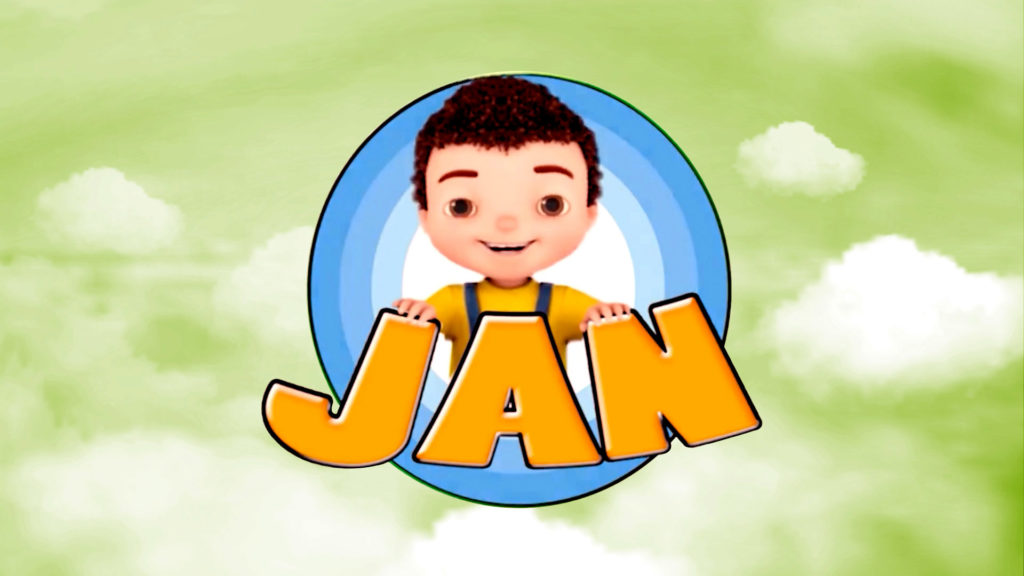AI-Generated Content
This article has been created using advanced AI technology to provide you with informative and engaging content.
AI-Curated Resources:
When we set out to learn about someone, a person like Jan Schiltmeijer, for instance, it's a bit like starting a treasure hunt. We usually begin by gathering what details we can, looking for any mention or connection that might lead us to a fuller picture. It's a natural human tendency, you know, to want to connect the dots and understand who someone is and what they're all about.
So, our initial step often involves checking various places, trying to piece together the bits of information that might exist. We might look through different writings, records, or even conversations, hoping to find something that sheds light on the individual we are curious about. It’s a process that, in some respects, requires a bit of patience and a good eye for detail.
Naturally, the quality of our search depends a lot on the sources we consult. Some sources might give us a lot of direct information, while others, you know, might offer related but not directly relevant details. It’s important, in a way, to understand what kind of information a source provides before we draw conclusions about a person or a topic.
Table of Contents
- Understanding the Quest for Jan Schiltmeijer's Story
- What Does Our Text Tell Us?
- Exploring the Digital Soundscape
- Decoding Dates and Months – A Jan Connection
- What's the Value of These Time Markers?
Understanding the Quest for Jan Schiltmeijer's Story
When we begin to search for someone like Jan Schiltmeijer, our minds naturally look for a personal history, a background story, something that tells us about their life. We want to know where they come from, what they do, or what makes them stand out. This desire for biographical information is, in fact, a very common part of how we try to make sense of the people around us, even those we don't know directly.
For someone like Jan Schiltmeijer, you might expect to find details about their career, their achievements, or maybe even some personal interests. It's almost like building a profile, piece by piece, to get a complete picture. However, sometimes the information we have at hand doesn't quite line up with what we're looking for, and that's okay, because it just means we learn about the source itself.
Personal Details for Jan Schiltmeijer
When we look at the specific text provided for reference, it's pretty clear that it doesn't give us any direct information about Jan Schiltmeijer himself. So, in a way, we can't fill in the blanks about his personal story from this particular piece of writing. It just isn't there, you know? This situation often happens when we're trying to find very specific facts in a general collection of writings.
Here’s a look at what we might typically seek for someone's background, and what our current reference material offers us in relation to Jan Schiltmeijer:
- Full Name: Jan Schiltmeijer
- Date of Birth: Not mentioned in the provided text.
- Place of Birth: No information found.
- Occupation/Profession: The text does not provide this detail.
- Known For: There's no mention of any specific accomplishments or areas of recognition for Jan Schiltmeijer within the given material.
- Key Contributions: The text offers no insight into any contributions made by Jan Schiltmeijer.
- Other Relevant Information: The provided text simply does not contain any biographical information about this individual.
So, as you can see, the text we're working with just doesn't offer the kind of personal details we'd hope to find for a person's biography. It's a good reminder that not every piece of writing will contain everything we're looking for, especially when our search is quite specific, like for someone named Jan Schiltmeijer.
What Does Our Text Tell Us?
Alright, so while our reference text doesn't tell us about Jan Schiltmeijer, it certainly talks about other things. It's actually quite interesting what it does cover, and how it touches upon everyday experiences for many people. Basically, the information focuses on things like listening to music and understanding dates, which are pretty common parts of our daily lives, wouldn't you say?
The text, for example, talks a good deal about different ways people get their favorite songs. It also goes into how we shorten names for months, which is something we see on calendars and in documents all the time. It's a bit like getting a glimpse into how information is organized and presented in different contexts, even if it's not about the person we originally sought.
It's important to note that even when a text doesn't answer our primary question, it can still hold value by giving us other useful bits of knowledge. This particular text, you know, gives us a sense of what kinds of digital services people use and how language works in short forms. It's a different kind of information, but still, in some respects, very relevant to modern living.
Exploring the Digital Soundscape
The provided text really gets into the current ways people enjoy tunes. It highlights how many options are out there for listening to your favorite songs through the internet. It mentions, for example, that Spotify is a well-known player in this area, but it also makes a point to say that it's not the only choice worth checking out. This is pretty useful information for anyone who loves music and wants to explore different listening avenues, wouldn't you agree?
It talks about how various people who write and edit for guides spend quite a bit of time looking closely at items, services, and applications to help others. This gives you a sense of the effort that goes into giving good advice about these digital sound places. It's about helping people pick the best way to relax and escape the usual stresses of daily existence through sound.
There are, apparently, a whole lot of popular ways to stream music, but the text narrows it down to a few top picks. It lists services like Prime Music, Spotify, and Qobuz, among others. This focus on a select group makes it easier for someone to consider their choices without feeling overwhelmed by the sheer number of possibilities out there. It's a bit like having a friend give you a few good recommendations.
Why Consider Other Streaming Choices?
So, you might wonder, why would someone look beyond the most obvious music streaming choice? Well, the text suggests that while one service might be very popular, it's not the only one that's good. There are, in fact, many reasons why someone might want to explore other options for their listening pleasure. Maybe they're looking for better sound quality, or perhaps a different collection of songs, or even a service that offers special content you can't find anywhere else.
Sometimes, too it's almost about the feel of the service, or how easy it is to use. Some people might prefer a simpler layout, while others might want more advanced features. The text, in a way, encourages us to think about what really matters to us when we're picking a place to get our music. It's not just about what's popular, but what fits your personal listening habits best, you know?
Also, different services might have different ways of putting together song lists for you, or they might offer exclusive performances. This means that by checking out other options, you could discover new music or new ways to enjoy the music you already love. It's pretty cool to think about all the possibilities, honestly, when it comes to finding the perfect sound companion.
Uncovering Free Music Apps
The text also shines a light on finding music applications that don't cost anything, which is a pretty sweet deal for anyone. It talks about discovering the top free music apps that you should have on your phone right now. This is especially helpful for people who want to enjoy music without having to spend money on subscriptions, which is, in some respects, a common desire.
It makes it clear that every app mentioned in this particular collection works on both Apple and Android devices. This is a very important detail, as it means most people with a smartphone can take advantage of these suggestions. It removes any worry about compatibility, making it easier for folks to just try them out, which is pretty convenient, right?
Listening to good music is, as the text points out, one of the best ways to unwind and get away from the pressures of everyday existence. And with plenty of great music apps out there that let you listen to your favorite tunes for free, it's easier than ever to find that moment of calm. It's quite a nice thought, actually, that access to relaxing sounds can be so readily available.
Decoding Dates and Months – A Jan Connection
Moving on from music, our reference text also shifts gears a bit to talk about something completely different but equally common: the way we refer to months. It explains what "Jan," "Mar," "Feb," "Apr," "May," and "Jun" mean. These are, basically, just shorter forms of the month names, which is something we see all the time on calendars and in quick notes. It's a simple bit of information, yet very practical for daily life.
The text clarifies that these abbreviations come from the English names for the months. So, "Jan" stands for January, "Feb" for February, and so on. It's a system designed for brevity, allowing us to write or say dates more quickly. This kind of shorthand is quite common in many areas, from financial reports to everyday scheduling, you know?
It's interesting to see how the text explains the origin of "Jan" specifically, linking it to an old Roman story. It says that January comes from Janus, a guardian spirit with two faces, one looking back at the past year and one looking forward to the new one. This bit of history gives a little extra flavor to something as simple as a month's name, making it, in a way, more than just a word.
How Do We Interpret Shortened Month Names?
So, how do we usually figure out what these short month names stand for? Well, the text gives us a pretty straightforward guide. It lists all twelve months along with their common abbreviations. This means if you see "Jan." or "Dec.", you can pretty quickly tell what month it's referring to, which is pretty handy, honestly.
The text points out that we often see these shorter forms on calendars. This is a great example of how they're used in a very practical sense, allowing for more information to fit in a small space. It's a simple trick of language, but it really helps with everyday organization, wouldn't you say? It makes things just a little bit more efficient.
It also mentions that sometimes the abbreviation might have a period after it, like "Jan.", or be all in capital letters, like "JAN.". These small differences don't change the meaning, but they're good to be aware of when you're reading different kinds of documents. It's all about recognizing the patterns and understanding the common ways we shorten things.
The Meaning Behind 'Jan'
Focusing a bit more on "Jan," the text really gives us a nice little explanation of its meaning beyond just being the first month. It highlights that "Jan" is the short form for January, which marks the start of a new year. This is a pretty significant time for many people, representing new beginnings and fresh starts, so it's a month with a special feel, really.
The text also goes into the historical connection, mentioning that January gets its name from an old Roman god named Janus. This god was often shown with two faces, one looking back at what has passed and the other gazing ahead to what's coming. This symbolism is quite fitting for a month that bridges the old year and the new, don't you think?
So, when we see "Jan," it's not just a simple abbreviation; it carries a bit of history and a sense of transition. It's a good example of how even very common words or abbreviations can have deeper roots and interesting stories behind them. It’s pretty cool to think about, actually, how much history is packed into such a small word.
What's the Value of These Time Markers?
The text also briefly touches on how these month abbreviations, and related time markers like YTD (Year to Date) and MTD (Month to Date), are used in things like financial analysis and business management. This shows that these simple abbreviations have a very practical purpose in more formal settings. They help people keep track of progress over specific periods, which is quite important for businesses, you know?
Understanding what YTD means, for example, helps people know that they are looking at numbers from the beginning of the year up to the current day. Similarly, MTD refers to figures from the start of the current month until today. These are, in a way, very specific ways of measuring time for particular purposes, making data much clearer for those who need it.
So, while our initial search for Jan Schiltmeijer didn't yield direct results from this text, we did learn about how information is presented, from popular music services to the simple abbreviations of months and financial terms. It just goes to show that even when a source doesn't give us what we first look for, it can still offer a whole lot of other interesting and useful bits of knowledge, which is pretty valuable in itself, honestly.
In this piece, we set out to find information about Jan Schiltmeijer, exploring how one might approach such a search. We examined a specific text to see what details it might offer, discovering that while it didn't contain biographical facts about Jan Schiltmeijer, it provided a wealth of information on other topics. We looked at how the text discusses popular online music listening options, including various streaming services and free applications, highlighting how people find ways to enjoy sound. Additionally, we explored the text's explanation of month abbreviations, such as 'Jan' for January, and touched upon the historical origins of these terms. Finally, we considered the practical use of time markers like YTD and MTD in business, demonstrating how different kinds of information serve various purposes, even if they don't directly answer an initial query.
AI-Enhanced Visual Content


